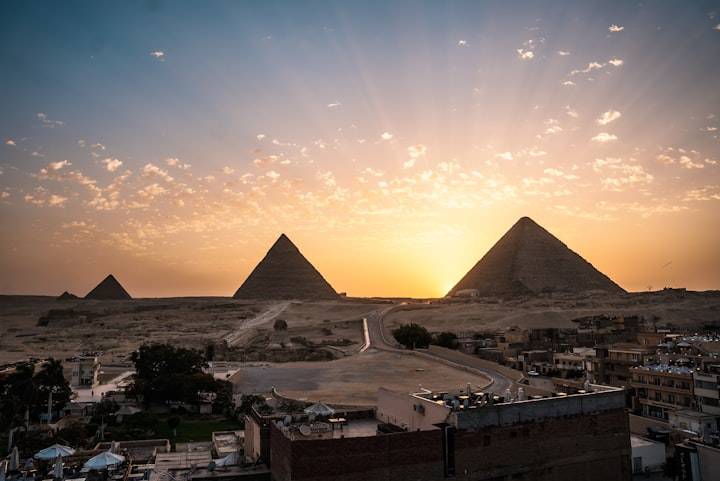For centuries, the Great Pyramid of Giza has captivated the imagination of people around the world. Traditionally viewed as a tomb for the Pharaoh Khufu, recent theories suggest this ancient wonder may have served a far more advanced purpose. Could the Great Pyramid have actually been an enormous power plant, harnessing energy in ways we're only beginning to understand?
The conventional narrative tells us the Great Pyramid was built around 2560 BCE as an elaborate burial chamber. However, several peculiarities challenge this view. Unlike other Egyptian tombs, the Great Pyramid lacks the ornate decorations, hieroglyphs, and artifacts typically associated with pharaonic burials. No mummy has ever been found inside, nor any clear evidence that one was ever present.
What's more, the pyramid's construction demonstrates a level of precision that seems almost impossible for its time. Its base is level to within a mere 0.75 inches across 13 acres. Its sides, stretching over 755 feet, are aligned to true north with an accuracy of 99.98%. The structure itself contains an estimated 2.3 million stone blocks, some weighing up to 80 tons, fitted together with remarkable precision.
These factors have led some researchers to propose alternative theories about the pyramid's purpose. One of the most intriguing suggests that the Great Pyramid was actually a sophisticated machine for generating and transmitting energy.
Christopher Dunn, an engineer and author, has been at the forefront of this "power plant theory." He argues that the pyramid's internal structure and choice of materials indicate it was designed to harness vibrational energy from the Earth and convert it into usable power.
According to this theory, the process begins in the subterranean chamber, where underground water movement creates sound waves. These waves, resonating at the Earth's natural frequency, travel upward through the pyramid's structure. The Queen's Chamber, Dunn suggests, housed a chemical reaction producing hydrogen gas. This gas would then flow into the Grand Gallery, where a series of resonators would further excite it.
The King's Chamber, with its granite construction, could have acted as a resonance chamber, focusing and amplifying these energies. Above it, five layers of granite beams - known as the "relieving chambers" - might have been precisely tuned to resonate at specific frequencies.
Interestingly, recent scientific studies have lent some credence to the idea that the pyramid interacts with electromagnetic energy in unique ways. In 2018, researchers found that the pyramid can concentrate electromagnetic energy in its internal chambers and under its base when subjected to radio waves of certain frequencies.
Proponents of the power plant theory draw parallels between the pyramid's supposed function and the work of Nikola Tesla in the early 20th century. Tesla's vision of wireless energy transmission bears striking similarities to how the pyramid might have operated if it indeed served as an energy generator.
However, this theory faces significant challenges. Chief among them is the lack of historical evidence. If the ancient Egyptians possessed such advanced technology, why is there no mention of it in their extensive written records? Why do we find no other examples of similar technology from that era?
Some researchers, like Graham Hancock, propose a solution to this dilemma: what if the pyramids predate Egyptian civilization? Hancock points to astronomical alignments that suggest the Giza complex might be much older than traditionally thought, possibly dating back to around 10,500 BCE.
This idea aligns with geological observations made by Dr. Robert Schoch, who argues that erosion patterns on the nearby Sphinx indicate it was subjected to heavy rainfall - a climatic condition not seen in Egypt since the end of the last ice age, over 5,000 years before the accepted construction date of the pyramids.
The power plant theory also raises questions about the fate of this technology. If such an advanced energy system existed, what happened to it? Some speculate that a catastrophic event, possibly linked to the rapid climate changes at the end of the last ice age, might have damaged or destroyed the system.
While these alternative theories are fascinating, it's important to approach them with a critical eye. The conventional view of the pyramids as tombs is backed by a wealth of archaeological and historical evidence. The power plant theory, while intriguing, remains speculative and lacks concrete proof.
That said, the Great Pyramid continues to surprise us. Its precise construction, unique internal structure, and ability to interact with electromagnetic waves in unexpected ways suggest there may be more to this ancient wonder than we currently understand.
As we continue to study the pyramids with advanced technology and open minds, we may uncover new insights into their purpose and construction. Whether they were tombs, power plants, or served some other function we haven't yet considered, the pyramids remain a testament to the ingenuity and capabilities of our ancestors.
The debate surrounding the Great Pyramid's purpose highlights the ongoing dialogue between conventional archaeology and alternative theories. While it's crucial to respect the scientific consensus, it's equally important to remain open to new ideas that challenge our understanding of ancient civilizations.
In the end, the mystery of the Great Pyramid serves as a humbling reminder of how much we have yet to learn about our past. As we continue to explore and question, we may find that the answers lead us not just to a better understanding of ancient Egypt, but to new insights about human potential and the nature of our relationship with the Earth itself.


